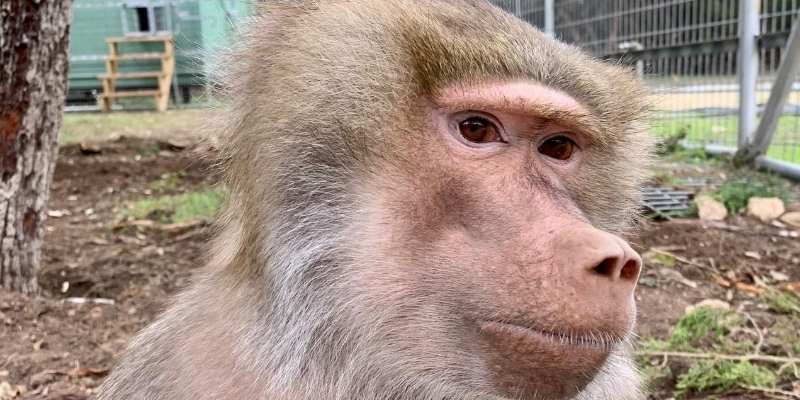The oppression of primates in research rears its ugly head thanks to coronavirus
Today we are relieved that baboons Janet, Jack, Olive and Saffron are safe and sound at San Antonio-based Primarily Primates. They are the lucky ones.
Sadly, other primates in San Antonio as well as other states are not so lucky. A research facility in San Antonio is poised to give some of its baboons the coronoavirus in the hopes of finding a cure, according to media reports.
After eight generations of breeding, the facility houses nearly 1,000 baboons. Likewise marmosets at a research facility in Wisconsin and rhesus macaques at a research in Montana will all suffer the same unnecessary fate. PPI is also home to rescued macaques and marmosets.
The Texas lab even admits that a similar urgent effort took place for the Severe Acute Respiratory Syndrome outbreak in 2003. Labs inoculated rhesus macaques, marmosets and howler, green and squirrel monkeys. None got consistently sick enough with human-like symptoms.
We agree with the New England Anti-Vivesection Society that animals are poor models for human disease research. Because they are genetically different from humans, studying illness in animals can give us inadequate or erroneous information.
Even chimpanzees, our closest genetic relatives, do not accurately predict results in humans – for example unlike humans, chimpanzees infected with HIV do not become sick with symptoms of HIV or AIDS. Chimpanzee research failed to help us develop a vaccine to prevent AIDS. And despite millions of animals used in cancer research, roughly 95% of cancer drugs that enter human clinical testing fail despite what the animal experiments may have led researchers to assume, and our incidences of cancer have continued to rise. "We have cured cancer in mice for decades – and it simply didn’t work in humans,” according to Dr. Richard Klausner, former director of the National Cancer Institute.
Organ-on-a-chip technology (micro-chips lined by human living cells that closely mimic the key physiological functions of body organs) have shown great potential to replace animals in laboratories, including, in some instances, primates. They have shown potential to provide superior in vitro (test tube) test methods that mimic human biological response with greater accuracy than animal models on a broad scale of application across biomedical research. For example, scientists at Imperial College in London recently used a liver-on-a-chip platform to study the effect of hepatitis B virus, and noted similar biological responses to the virus as a real human liver.


